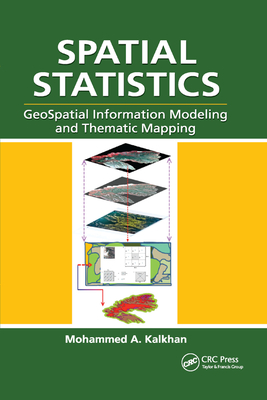Improving GIS-based Wildlife-Habitat Analysis (SpringerBriefs in Ecology)
暫譯: 改善基於GIS的野生動物棲息地分析(生態學SpringerBriefs系列)
Jeffrey K. Keller, Charles R. Smith
- 出版商: Springer
- 出版日期: 2014-10-10
- 售價: $2,430
- 貴賓價: 9.5 折 $2,309
- 語言: 英文
- 頁數: 132
- 裝訂: Paperback
- ISBN: 3319096079
- ISBN-13: 9783319096070
-
相關分類:
地理資訊系統 Gis
海外代購書籍(需單獨結帳)
商品描述
Geographic Information Systems (GIS) provide a powerful tool for the investigation of species-habitat relationships and the development of wildlife management and conservation programs. However, the relative ease of data manipulation and analysis using GIS, associated landscape metrics packages, and sophisticated statistical tests may sometimes cause investigators to overlook important species-habitat functional relationships. Additionally, underlying assumptions of the study design or technology may have unrecognized consequences. This volume examines how initial researcher choices of image resolution, scale(s) of analysis, response and explanatory variables, and location and area of samples can influence analysis results, interpretation, predictive capability, and study-derived management prescriptions. Overall, most studies in this realm employ relatively low resolution imagery that allows neither identification nor accurate classification of habitat components. Additionally, the landscape metrics typically employed do not adequately quantify component spatial arrangement associated with species occupation. To address this latter issue, the authors introduce two novel landscape metrics that measure the functional size and location in the landscape of taxon-specific ‘solid’ and ‘edge’ habitat types. Keller and Smith conclude that investigators conducting GIS-based analyses of species-habitat relationships should more carefully 1) match the resolution of remotely sensed imagery to the scale of habitat functional relationships of the focal taxon, 2) identify attributes (explanatory variables) of habitat architecture, size, configuration, quality, and context that reflect the way the focal taxon uses the subset of the landscape it occupies, and 3) match the location and scale of habitat samples, whether GIS- or ground-based, to corresponding species’ detection locations and scales of habitat use.
商品描述(中文翻譯)
地理資訊系統(GIS)提供了一個強大的工具,用於調查物種與棲息地之間的關係,以及開發野生動物管理和保護計劃。然而,使用GIS、相關的景觀指標套件和複雜的統計測試進行數據操作和分析的相對簡便性,有時可能會使研究者忽視重要的物種-棲息地功能關係。此外,研究設計或技術的潛在假設可能會產生未被認識的後果。本書探討了研究者在選擇影像解析度、分析尺度、反應變數和解釋變數,以及樣本的位置和面積時的初步選擇如何影響分析結果、解釋、預測能力和研究衍生的管理建議。總體而言,這一領域的大多數研究使用的影像解析度相對較低,無法識別或準確分類棲息地組成部分。此外,通常使用的景觀指標並未充分量化與物種佔據相關的組件空間排列。為了解決這一問題,作者引入了兩種新穎的景觀指標,測量特定分類群的“實心”和“邊緣”棲息地類型在景觀中的功能大小和位置。Keller和Smith總結道,進行基於GIS的物種-棲息地關係分析的研究者應更仔細地 1) 將遙感影像的解析度與焦點分類群的棲息地功能關係的尺度相匹配,2) 確定反映焦點分類群使用其佔據的景觀子集的棲息地結構、大小、配置、質量和背景的屬性(解釋變數),以及 3) 將棲息地樣本的位置和尺度,無論是基於GIS還是地面,與相應物種的檢測位置和棲息地使用尺度相匹配。












